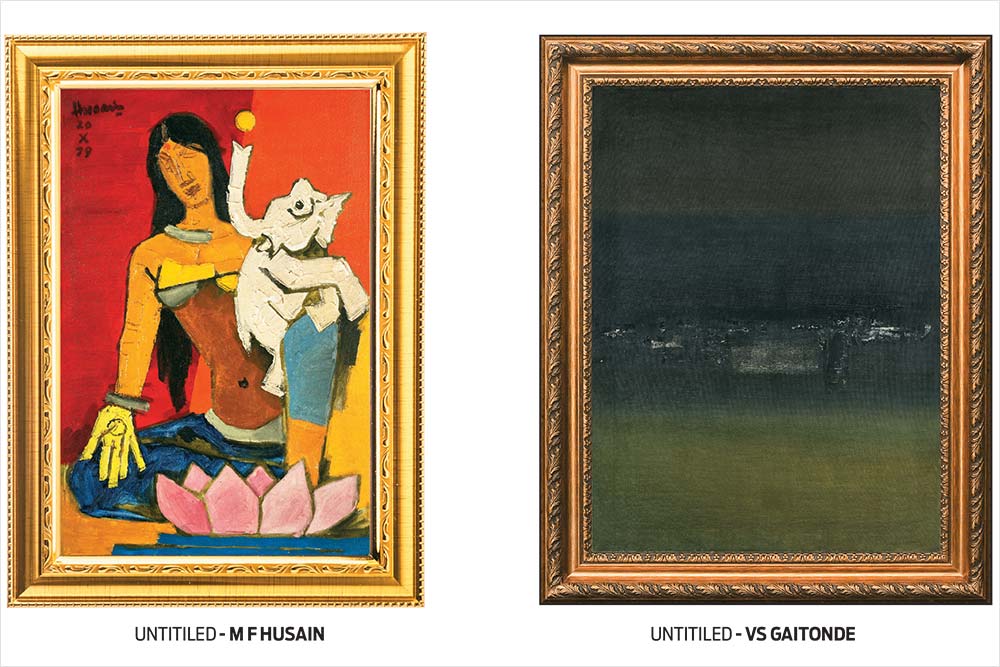The art boom is no passing phase. You can churn out record-breaking returns by investing in that prized collection. This is an asset for the long term.
Given the current exposure that Indian art is receiving, the projected turnover of the market will hold its ground, and further expand over the next decade. The auction market has generated an estimated turnover of Rs 715 crore in 2020 as against Rs 710 crore in 2019.
It is safe to expect an increment in prices, given the steady growth in demand and the limited supply of quality artwork. Investment in art as an asset with long-term tangible value and as an instrument to hedge against in?ation, has done exceptionally well. Needless to say, the Indian art auction market stood its ground despite the pandemic. You could well consider last year’s world record established for the most expensive modern Indian painting as a validating point.
In fact, VS Gaitonde continues to rule the roster, considering that it was his untitled work from 1995 that previously held the record. Depending on the size of the painting, his work has been selling in the range of Rs 5-30 crore. In 2020, Gaitonde’s painting from the year 1974 superseded his 2015 auction record at a hammer price of Rs 32 crore. This meant it fetched an overall Rs 36.8 crore, including premium.
Plan Your Asset
As an investment proposition, art is a genuine contender for any sophisticated asset planning strategy. Good art will always garner demand and the prices of masterpieces by seminal artists will remain high. The very perception of investment in art is considered visionary and often fused with pre-emptive gestures. As per our research on the market’s performance, we can expect a 10 per cent year-on-year growth of Rs 780 crore in 2021. Having a work of art, with an unmatched aesthetic value that appreciates with time, is indeed an asset. Therefore, rather than focusing on short-term gains, it is imperative to perceive art as a viable long-term investment. With the market presenting an encouraging prospect, this is the ideal entry point to invest in Indian art. Its stint with undervaluation is a matter of the past.

Tips To Buy
Art will always be a subjective investment, in?uenced by the trends of the time. Like any other investment, extensive research is a must. Therefore, you must always keep a keen eye to validate an acquisition, backed by research and analysis. Dedicate months in observing art auction news and valuation trends.
Factors such as an artwork’s exhibition and publication history will always help. Speak to a curator or a specialist to get an inside scoop. Another crucial factor to trace is the provenance of the artwork. Follow the respective artist’s auction performance before committing. Look at the top ten artists. Observe the paintings of the highest value sold by leading auction houses. The demand in the sub-continent is growing. Domestic collectors have a discerning appetite for good quality work. It has also sustained the international circuit, reflecting a resilient demand among global and non-resident Indian collectors.
Upcoming Trends
The importance of technology has changed the very fabric of commerce. The digital platform has amalgamated global markets and client base into one calibrated market. Apart from the safety factor, which technology provides, there is the advantage of ease and mobility. You can participate in auctions while on the go, either through a website or mobile apps. Finally, the time factor has got an extension too. While the conventional auction format is conducted over a crunched time span, online ones hold no such constraints.
The trends observed in the past year will continue to follow suit in 2021. The most prominent one could be the growing demand for leading modern masters like MF Husain, VS Gaitonde, SH Raza and FN Souza, Prabhakar Barwe, KK Hebbar, Amrita Sher-Gil. There is considerable interest generated by Bengal School maestros such as Rabindranath Tagore, Abanindranath Tagore, Gaganendranath Tagore, Jamini Roy, Nandalal Bose, Ramkinkar Baij and Somnath Hore.
The other encouraging trend is the aggressive pace at which corporates are expanding their collections and exhibiting the works in public spaces. This will further accentuate the awareness of art, which is anyway on a rise, considering there are numerous art fairs being conducted by non-profit organisations and various associations in India.
Future Growth
Holistically portraying the Indian art auction market, the future only looks bigger and better. The growth is also substantiated by an increase in the number of first-time art buyers. In the recent past, big-ticket art auctions were almost always reserved for Chinese and European works. With a fresh precedent, international recall, and much-deserved recognition for Indian artists, the market is elevated and yet grounded with precise and calculated sanguine projections. The enhanced ef?ciency in terms of the total sold lots and an increment in the average lot value indicate the ?nancial aspect of Indian ?ne art is stable. With a low correlation to stock markets, it is an ideal alternative to diversify your investment portfolio. Indian art is scaling steadily with an accelerated and accentuated persona, garnering attention on a juggernaut scale.
The author is the Vice President, Business Strategy & Operations, AstaGuru







